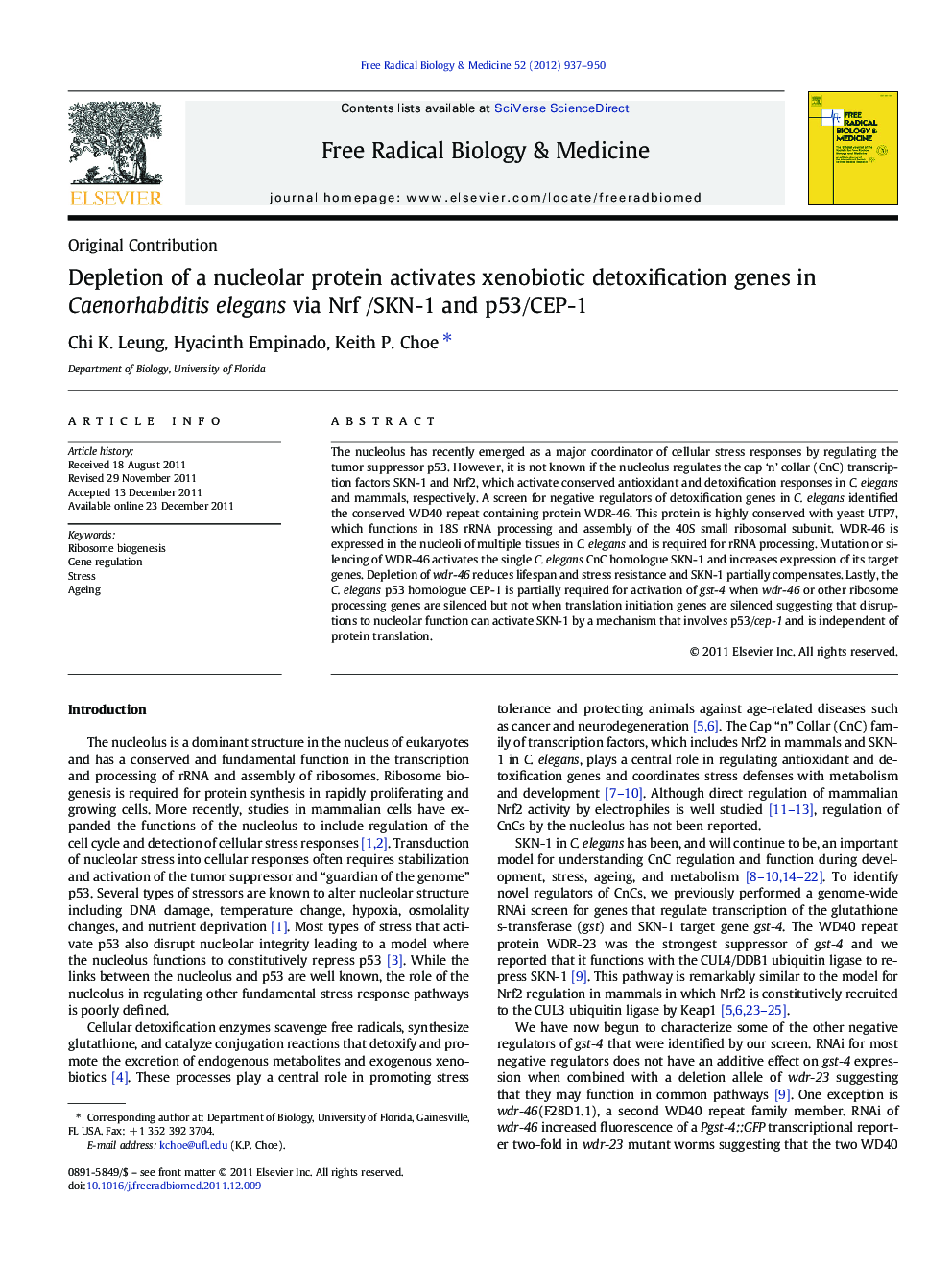| Article ID | Journal | Published Year | Pages | File Type |
|---|---|---|---|---|
| 1908614 | Free Radical Biology and Medicine | 2012 | 14 Pages |
The nucleolus has recently emerged as a major coordinator of cellular stress responses by regulating the tumor suppressor p53. However, it is not known if the nucleolus regulates the cap ‘n’ collar (CnC) transcription factors SKN-1 and Nrf2, which activate conserved antioxidant and detoxification responses in C. elegans and mammals, respectively. A screen for negative regulators of detoxification genes in C. elegans identified the conserved WD40 repeat containing protein WDR-46. This protein is highly conserved with yeast UTP7, which functions in 18S rRNA processing and assembly of the 40S small ribosomal subunit. WDR-46 is expressed in the nucleoli of multiple tissues in C. elegans and is required for rRNA processing. Mutation or silencing of WDR-46 activates the single C. elegans CnC homologue SKN-1 and increases expression of its target genes. Depletion of wdr-46 reduces lifespan and stress resistance and SKN-1 partially compensates. Lastly, the C. elegans p53 homologue CEP-1 is partially required for activation of gst-4 when wdr-46 or other ribosome processing genes are silenced but not when translation initiation genes are silenced suggesting that disruptions to nucleolar function can activate SKN-1 by a mechanism that involves p53/cep-1 and is independent of protein translation.
Graphical abstractFigure optionsDownload full-size imageDownload high-quality image (67 K)Download as PowerPoint slideHighlights► WDR-46 is a conserved nucleolar protein required for ribosome biogenesis ► Depletion of WDR-46 activates the antioxidant/detoxification factor SKN-1/Nrf ► WDR-46 depletion decreases longevity and stress resistance ► p53 contributes to activation of SKN-1/Nrf when ribosome biogenesis is disrupted
